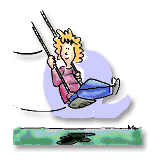- Find a Doctor
-
For Parents
- Before Your Visit
- During Your Visit
- After Your Visit
- More Resources for Parents
Patient & Visitor Resources -
Services
- Locations
-
About Us
- About Childrens
- Find it Fast
- Additional Resources
Find it FastAdditional Resources - MyCHP
ALERT:
There is construction in and around UPMC Children’s Hospital that is affecting the traffic flow – please allow for extra time traveling into the hospital.
- Find a Doctor
- For Parents
-
Services
-
Frequently Searched Services
- Asthma Center
- Brain Care Institute (Neurology & Neurosurgery)
- Cancer
- UPMC Children's Express Care
- Ear, Nose, & Throat (ENT)
- Emergency Medicine
- Endocrinology
- Gastroenterology
- Heart Institute
- Genetic & Genomic Medicine
- Infectious Diseases
- Nephrology
- Newborn Medicine
- Primary Care
- Pulmonary Medicine
- Rheumatology
- Surgery
- Transplant Programs
- See All Services
-
Frequently Searched Services
- Locations
- About Us
- MyCHP
- I Want To
- More Links









 By the time your child reaches pre-school age, they have accomplished a great number of skills – talking, walking, running and playing. They are also learning to reason when it comes to their independence. Now is an appropriate time to begin teaching good safety habits to your preschool and/or elementary school children. Remember, your child learns by modeling your behavior; your safety habits will become their own. The suggestions in this section will help you explain why safety habits are good skills for pre-schoolers and elementary school children.
By the time your child reaches pre-school age, they have accomplished a great number of skills – talking, walking, running and playing. They are also learning to reason when it comes to their independence. Now is an appropriate time to begin teaching good safety habits to your preschool and/or elementary school children. Remember, your child learns by modeling your behavior; your safety habits will become their own. The suggestions in this section will help you explain why safety habits are good skills for pre-schoolers and elementary school children. Young children should be watched closely at all times when playing outside. Use the following tips for outdoor safety.
Young children should be watched closely at all times when playing outside. Use the following tips for outdoor safety.